Part 1: Theories and Concepts of STS
9 Gender and STS
Brooke Alysse Norman; Emily Jarvis; Katie Bernstein; Maraya Garcia; and Maurice Ceasar
Definition
Gender, from a binary or non-binary perspective, has a major impact on how people are perceived in society, especially in the workforce. Gender roles and stereotypes play an important role in the overall definition of gender. Planned parenthood defines gender roles as, “how we’re expected to act, speak, dress, groom, and conduct ourselves based upon our assigned sex”. Gender stereotypes reinforce this idea of a gender role by enforcing characteristics onto them. This can be displayed in a variety of ways, including hypermasculinity and hyperfemininity.
The impact that gender roles and stereotypes have had on technology is difficult to quantify. Women, gender, and technology found that while there is a large increase in women’s studies as well as an increase in technology, there is not an overlap between the two. This begs the question of why women aren’t going into technology if both fields are growing. According to a study discussed in “The Gender Gap in STEM Fields”, more women tend to view STEM related careers as much more masculine than men view them. This has impacted the desire to enter careers in STEM by making them much more appealing to men than women. This has led to the large discrepancy between male and female representation when it comes to science, technology, and society.
Gender also plays a big part in how work in science and technology is portrayed by the public. An article published by Fortune.com states that, of all the technology based jobs, only 25% of them are held by females. Despite the much smaller percentage of women in those jobs, the quitting rate for the women is 41% higher than that of men in technology based jobs. Myths surrounding the “limitations” that come with gender are a big reason for the discrepancies are seen today. While there is still a gap and an ongoing debate between the genders, progress is being made. Gender is a fluid topic that can be described as such, the transgender spectrum is enormous, identity being a limiting factor for progress in education and work is logically flawed and without functional merit. It’s undeniable that in the modern day…
Challenges
https://link.springer.com/article/10.1007/s10648-015-9355-x
According to Springer Link, there are six different possible reasons that could lead to the gender gap in STEM fields: “(1) cognitive ability, (2) relative cognitive strengths, (3) career preferences, (4) lifestyle values, (5) field-specific ability beliefs, and (6) gender-related stereotypes and biases” (Wang).
- Cognitive Ability Level: Research demonstrates that while females tend to get better grades in math, males outscore females on standardized tests.
- Relative Cognitive Strengths: Women tend to have more balanced math and verbal abilities than men. So most “math-talented women are more likely to choose challenging non-STEM fields that are more practical or applied, as opposed to math-intensive STEM fields that are more theoretical or mechanical” (Wang).
- Career Preferences: Research shows that males prefer to work with objects while females prefer to work with people. These ideas are installed into children’s brains from an early age. They are depicted into the societal norm as what is a normal job for a woman and what is a normal job for a man.
- Lifestyle Values: Women are more willing to make job sacrifices for their families than men. Men also more often prefer a work-centered lifestyle than women. This can be translated back into the 20th century when men were generally seen to be working and women were expected to be a stay-at-home parent with children.
- Field-Specific Ability Beliefs: Studies show that women may be avoiding challenging careers in STEM “not only because they erroneously believe that innate intelligence is needed for success in these fields, but also because they erroneously believe that they belong to a group that is less likely to possess the qualities needed for success in these fields” (Wang).
- Gender-Based Stereotypes and Biases: Discrimination and prejudice play a large factor into why women are underrepresented in STEM fields.
Relationship to STS
Here is where you will describe how your theory or concept directly relates to STS.
Examples
Here you will provide examples of this theory or concept as it relates to STS.
Brooke Norman:
https://www.pnas.org/doi/10.1073/pnas.2001684117
Due to many different factors, there is a large gender gap in the area of publication favoring men. There is a women’s publication shortage in many fields, especially science, technology, engineering, and mathematics. While the study by Huang shows that men and women publish a similar number of articles, women have high rates of dropping out of publishing. This is a likely result of the social roles each gender has in science and the responsibilities they take because of these roles.
Some young scientists (more women than men) disappear entirely from further employment. “Among the 2014 to 2015 doctorate recipients in science and engineering, more women (4.0%) than men (1.4%) were not employed and not seeking work in 2017” (Eagly 2020). Also, “in doctoral institutions with very high research activity, which produce a large portion of all publications, 21.7% of female faculty were in instructor and lecturer positions in 2017 to 2018 compared with 11.6% of male faculty” (Eagly 2020). There is a clear difference in the numbers of positions held for women versus men where there are research and publication opportunities. “Among STEM doctorate holders employed in academia in science and engineering fields in 2017, 72.0% of the men and 62.8% of the women held full-time tenured and tenure track positions as assistant, associate, or full professors, positions that are usually more conducive to research than other university positions” (Eagly 2020).
Women’s engagement in teaching likely lessens their research productivity. Also, childbearing considerations also can likely lessen women’s aspirations for these careers because of the pressure of these positions.
- “In other male-dominated fields as in science, the women who enter have become partially segregated into specializations that offer greater congruence with social expectations for women” (Eagly 2020).
- “Also crucial are the definitions of academic jobs in terms of teaching, research, and other obligations and the allocation of on-the-job activities among those scientists who hold the same positions. These considerations are more subtle than outright employment discrimination and are likely more important to contemporary women’s publication careers” (Eagly 2020).
Katie Bernstein (Intersectionality and Examples)
Intersectionality is just one example of how the development of science, technology, and society can influence just who can interact within the
Intersectionality: “the ways in which systems of inequality based on gender, race, ethnicity, sexual orientation, gender identity, disability, class and other forms of discrimination “intersect” to create unique dynamics and effects”
(What is Intersectionality? Center for Intersectional Justice. (n.d.). Retrieved April 5, 2022, from https://www.intersectionaljustice.org/what-is-intersectionality)
Video on Intersectionality: https://www.youtube.com/watch?v=ViDtnfQ9FHc

In the video provided, Kimberlé Crenshaw, the woman who coined the term “intersectionality,” explains what its meaning is and how it can be considered in different contexts.
We can use the idea of intersectionality to interpret the ways in which gender and STS interact with each other. Providing examples of different women in Science, as well as their contributions to STS overall, we can analyze how their identities intersect with STS. Considering race, age, sexual orientation, religion, etc., and how these factors contribute to the discussion of gender and STS is the main point of this section.
The examples of women in this section explore the key elements of intersectionality. Each woman listed interacts with intersectionality in at least one way.
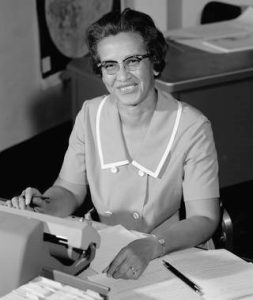
Katherine Johnson (1918-2020): Katherine Johnson was one of the first women of color to work in NASA in the 1960s and directly contribute to their scientific and extraterrestrial discoveries. During this same period, the Civil Rights Movement was in its most intense moments, and the relationship between white and black Americans was tense. Regardless, NASA relied on Johnson and her skills to help with their missions. Johnson would hand calculate extensive equations and crunch large numbers to make sure that the computers they were relying on at NASA were doing them correctly. She contributed to one of many reports regarding the first space exploration and the math behind rocket take-offs. Johnson is world-renowned in her field, as well as her portrayal in the movie Hidden Figures by Taraji P. Henson. Johnson is one of the most famous black mathematicians, scientists, and women in history.
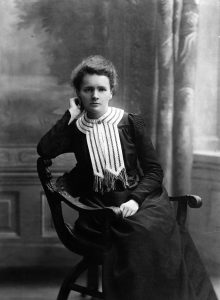
Marie Curie (1867-1934): Marie Curie is one of the most renowned female scientists in history. Curie was a Polish immigrant who immigrated to France to continue researching for the remainder of her life. Born in 1867, the Polish physicist pioneered research into radioactivity and was the first woman to win a Nobel Peace Prize. In 1898, Curie and her partner and husband Pierre discovered the elements polonium and radium; in 1903 they discovered radioactivity and won their first Nobel Peace Prize. By WWI, Curie had isolated pure radium (what she won her own Nobel Peace Prize for!) and began to work on x-rays, their radioactive substances, and how they could be used in the medical field. Curie was a leader in research for chemistry and physics, and she also pioneered the inclusion of women in science. She paved the way for generations after her to continue her work and discover things that she would not live to see. Curie goes to show what an immigrant woman in the late 19th century could contribute in a predominantly male field.
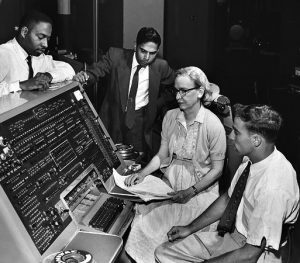
Grace Hopper (1906-1992): Grace Hopper is considered to be one of the greatest, “women of code,” as well as one of the leading contributors to the computer as we know it. Hopper was a Rear Admiral in the United States Navy and one of the original workers on the Harvard I Computer team. This team is known to be some of the first researchers into computing and investigating the ways in which computers can be utilized on greater, more powerful scales. Rear Adm. Hopper is also noted for creating “linkers” in code and creating the first English-based computer code. We have continued to use her coding language to create the coding languages we use today. English-based coding allowed the majority of the world to take on more complex coding projects and propel us into the 21st century. Hopper, on top of her tremendous achievements, was given the highest civilian honor in the United States postmortem in 2016. President Barack Obama named her as one of the last honorees of his second term. It took 14 years since she died to be officially commemorated for her efforts.
Elizabeth Magie (1866-1948): Have you ever played the hit game Monopoly with your friends or family? Have you heard of The Landlord’s Game and how it was the inspiration for Monopoly? Well, the inspiration for one of the most popular games in history was invented by a woman named Elizabeth Magie. Elizabeth “Lizzie” Magie was born in 1866 and was a game designer, writer, and feminist. She created The Landlord’s Game to illustrate progressive economics and to demonstrate how monopolies work. She patented her game in 1904 and only made about $500 from its success; compared to the millions of dollars Monopoly inventor Charles Darrow made. The impact the Magie had on society and would continue to have on our society through her game is immeasurable. Magie continues to be put in the background when discussing Monopoly due to the fact that she was a woman.
Lynn Conway (1938-): Lynn Conway is an American engineer, computer scientist, and transgender activist who is the first transgender woman in computer science to transition. Conway worked for IBM at the beginning of her career and was fired after she began transitioning from male to female. Conway struggled with gender identity from the day she was born and lived in fear of being outed after she transitioned. Conway did not let these fears stop her from contributing to computer architecture and invention. Conway laid the foundation for multiple-out-of-order dynamic instruction scheduling, which is still in use in computers today. Conway continued to shape the way computer engineering is approached today and held seats on various councils, education boards, and trustee organizations. She also invented “MOSIS,” which enabled a system of chip designs that enabled startups in the 80s onwards (these were used in the first cell phones!). Throughout all of this, Conway has made sure to make herself heard as a transwoman and advocate for the rights of transgender inventors around the world.
Greta Thunberg (2003-): Greta Thunberg is a Swedish environmental activist who founded the movement School Strike for Climate. She has been working in climate change reform and activism since 2018 and has built up an esteemed international reputation Although she is only 19, Greta has been able to speak at climate change conferences, rallies, and debates across the globe. She is a shining example of how younger people are able to make an impact on global issues and make themselves heard. On the other hand, Greta has used her Aspergers condition to bring attention to its effects and the community. Rather than seeing her condition as a limitation, she sees it as her own superpower. People that do not believe in her movement and stance tend to use her Aspergers and young age against her, but she continues to go above and beyond to make a difference in the world.
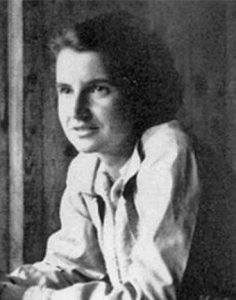
Rosalind Franklin (1920-1958): The work of British biophysicist Rosalind Franklin was important in determining the structure of DNA. Franklin did not receive the recognition that she deserved during her lifetime. Still, her X-ray diffraction photographs of DNA contained key information that James Watson and Francis Crick used to create their model of the DNA double helix. Since then, her contributions have been widely recognized as essential to our understanding of molecular biology and genetics (Finkle, 2023).
Missing Voices
Here you will provide information about ways that voices may have been left out of the conversation about this theory or concept.
Summary
For a summary, here’s a infographic that encapsulates the key points in this chapter.
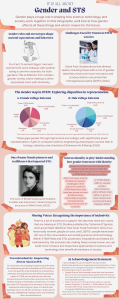
Chapter Questions
Who was the woman who was to be considered to be one of the greatest “women of the code”
A. Greta Thunberg
B. Katherine Johnson
C. Lynn Conway
D. Grace Hopper
True or False: Gender roles and stereotypes play an important role in the overall definition of gender.
A. True
B. False
True or False: Research shows that females prefer to work with objects while males prefer to work with people.
A. True
B. False
References
A&E Networks Television. (2021, May 10). Grace Hopper Biography. Biography.com. Retrieved February 4, 2022, from https://www.biography.com/scientist/grace-hopper
Charlesworth, T. E. S., & Banaji, M. R. (2019, September 11). Gender in science, technology, engineering, and mathematics: Issues, causes, solutions. Journal of Neuroscience. https://www.jneurosci.org/content/39/37/7228
ChatGPT 3.5. (n.d.). https://chat.openai.com
D’Ignazio, C., & Klein, L. F. (2020, March 10). Data feminism. MIT Press. https://direct.mit.edu/books/oa-monograph/4660/Data-Feminism
Eagly, A. H. (2020, March 3). Reforming the police through procedural justice … – pnas.org. Retrieved March 30, 2022, from https://www.pnas.org/doi/10.1073/pnas.2118780119.
Finkle, A. (2023, June 14). Rosalind Franklin: The dark lady of DNA. National Air and Space Museum. https://airandspace.si.edu/stories/editorial/rosalind-franklin-dark-lady-dna
Furlong, C. (2022). Greta Thunberg at Fridays For Future COP26 Scotland March. Greta Thunberg to Publish ‘The Climate Book’ on How ‘Planet’s Many Crises Connect.’ photograph, EcoWatch. Retrieved April 10, 2022, from https://www.ecowatch.com/greta-thunberg-climate-book.html.
Gender Identity & Roles: Feminine Traits & Stereotypes. Planned Parenthood. (2018). https://www.plannedparenthood.org/learn/gender-identity/sex-gender-identity/what-are-gender-roles-and-stereotypes
Gilbert, L. (1978). Grace Murray Hopper, in her office in Washington Dc. photograph.
Griffin, G. (2021, September 1). Feminizing Innovation: Challenges in science and technology studies (STS). Feminist Encounters: A Journal of Critical Studies in Culture and Politics. https://www.lectitopublishing.nl/Article/Detail/feminising-innovation-challenges-in-science-and-technology-studies-sts-11161
Huang, A. J. Gates, R. Sinatra, A.-L. Barabási, Historical comparison of gender inequality in scientific careers across countries and disciplines. Proc. Natl. Acad. Sci. U.S.A. 117, 4609–4616 (2020).
Loff, S. (Ed.). (1983). Katherine Johnson Portrait. Photograph. Portrait of Katherine Johnson taken in 1983 at NASA Langley Research Center.
Lynn Conway. CHM. (2014). Retrieved February 28, 2022, from https://computerhistory.org/profile/lynn-conway/
Marie Curie Biographical. The Nobel Prize. (n.d.). Retrieved February 3, 2022, from https://www.nobelprize.org/prizes/physics/1903/marie-curie/biographical/
National Women’s History Museum. (2018). Elizabeth Magie. Monopoly’s Lost Female Inventor. photograph. Retrieved February 3, 2022, from https://www.womenshistory.org/articles/monopolys-lost-female-inventor.
Pilon, M. (2015, February 13). Monopoly’s inventor: The progressive who didn’t pass ‘go’. The New York Times. Retrieved February 3, 2022, from https://www.nytimes.com/2015/02/15/business/behind-monopoly-an-inventor-who-didnt-pass-go.html
Rosalind Franklin (chemist and molecular biologist). OnThisDay.com. (2015). https://www.onthisday.com/people/rosalind-franklin
Schiebinger, L. (n.d.). Gender Studies of STS: A Look Toward the Future. Science,Technology, and Society. https://journals-sagepub-com.libproxy.clemson.edu/doi/epdf/10.1177/097172189900400107
Shetterly, M. L. (2016, November 22). Katherine Johnson Biography. From Hidden to Modern Figures. Retrieved February 3, 2022, from https://www.nasa.gov/content/katherine-johnson-biography
Tikkanen, A. (Ed.). (n.d.). Greta Thunberg. Encyclopædia Britannica. Retrieved February 12, 2022, from https://www.britannica.com/biography/Greta-Thunberg
University of Michigan Electrical and Computer Engineering. (n.d.). Lynn Conway. photograph. Retrieved February 12, 2022, from https://ece.engin.umich.edu/personnel/conway-lynn.
Wang, Ming-Te, and Jessica L. Degol. “Gender Gap in Science, Technology, Engineering, and Mathematics (Stem): Current Knowledge, Implications for Practice, Policy, and Future Directions – Educational Psychology Review.” SpringerLink, Springer US, 13 Jan. 2016, https://link.springer.com/article/10.1007/s10648-015-9355-x#cities.
What is Intersectionality? Center for Intersectional Justice. (n.d.). Retrieved April 5, 2022, from https://www.intersectionaljustice.org/what-is-intersectionality
Williams, J., Phillips, K., & Hall, E. (2014, January). (PDF) double jeopardy? gender bias against women of color in science. ResearchGate. https://www.researchgate.net/publication/271529571_Double_Jeopardy_Gender_Bias_Against_Women_of_Color_in_Science
Images & Media
“Rosalind-franklin-in-paris crop (cropped)” by CSHL, derivative work Lämpel is licensed under CC BY-SA 4.0
“Grace Hopper and UNIVAC” by Flickr: Grace Hopper and UNIVAC is licensed under CC BY 2.0
“Katherine Johnson at NASA, in 1966” by Adam Cuerden is in the Public Domain
Crenshaw, K. (2018). Kimberlé Crenshaw: What is Intersectionality? National Association of Independent Schools (NAIS). YouTube Video. Retrieved February 12, 2022, from https://www.youtube.com/watch?v=ViDtnfQ9FHc.
Wackerhausen, J. (2019, July). Test tube, laboratory and scientist people for Medical Research,… iStock. https://www.istockphoto.com/photo/test-tube-laboratory-and-scientist-people-for-medical-research-vaccine-solution-and-gm1553233445-526553803

